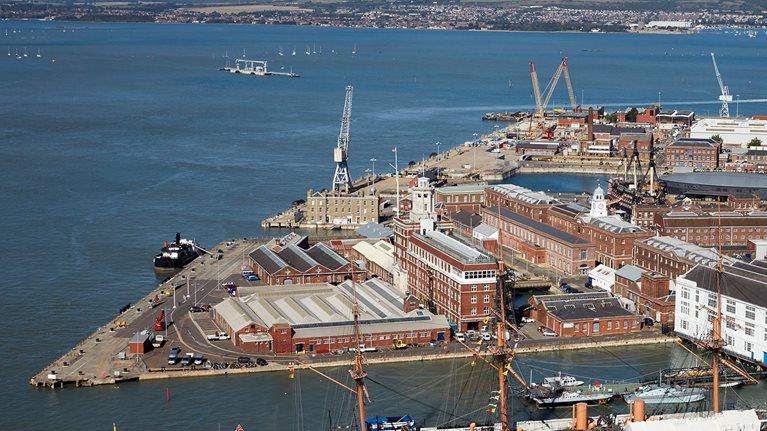UK executives are navigating a set of upheavals in their operating environment—from the invasion of Ukraine and the pandemic, to changes in the UK’s trading relationships, to new social and sustainability demands on business.1 Chief procurement officers (CPOs) and other leaders focused on procurement face steeper challenges than most. In addition to managing the uncertainties of the coronavirus and trade, they must strive to meet recent social-value requirements for public tenders—and they must retain and develop crucial procurement personnel at a time of mounting talent shortages and reskilling requirements.
In this article, we draw on conversations with CPOs across the United Kingdom, along with McKinsey’s global research, to spotlight the novel circumstances that are shaping UK procurement. We then set out a range of options that procurement leaders could consider as they work to adapt and thrive in a changed environment. As we argue in this article, companies that strengthen strategic foresight, innovation, and agility in their procurement functions stand to boost their long-term resilience and competitiveness, lead Britain’s economic and social recovery, and foster new prosperity.
Navigating new trade relationships in the pandemic
In the first quarter of 2021, the United Kingdom’s total trade in goods—including imports and exports—with non-EU countries surpassed trade with EU countries—a trend that continued for the whole of 2021 (Exhibit 1). Compared to the same quarter in 2018, trade in goods was down by 0.8 percent with non- EU nations, and 23.1 percent lower with EU nations.

Some changes in trade with key partners over recent years are striking. Among the United Kingdom’s top exporting partners, Ireland saw the greatest proportionate fall in exports after December 31, 2020. From Germany, imports have declined since April 2019. And exports to the United States were reduced in the first quarter of 2020; in the same quarter of 2021, exports to the US were aligned with decreases for other non-EU countries.
While the coronavirus has presented significant challenges for UK traders, businesses that responded to our survey were most likely to perceive the end of the EU transition period as the most significant impact over the period January to April 2021. More traders cited the end of the transition than those who cited COVID-19 or a combination of both factors.2
Chinese imports to the United Kingdom have increased steadily during the pandemic (Exhibit 2). Indeed, China has ranked highest among the United Kingdom’s import partners since the second quarter of 2020. In the first quarter of 2021, China supplied £16.9 billion of goods—including telecommunications and sound equipment, textiles, and clothing—compared to £10.2 billion for the same quarter three years ago. By contrast, the value of imports from the four next-highest import partners—Germany, the United States, the Netherlands, and France—declined in the same period. This trend is expected to continue: among UK procurement professionals surveyed by McKinsey over January and February 2022, 77 percent of CPOs say they have no plan to reduce the value of their sourcing from China in the run up to 2025. Moreover, 46 percent of CPOs say they expect to increase the value of their sourcing from India and the rest of Asia (excluding China to up to 10 percent of their total external supplier spend.

The spike in inflation is requiring procurement departments to manage costs. Input producer price inflation has been more volatile than output inflation. The headline rate of input prices showed growth of 13.6 percent on the year to January 2022, with metals and non-metallic minerals providing the largest contribution to the annual rate. In McKinsey’s recent survey, 54 percent of CPOs report that inflation is among their greatest priorities as they deal with current disruptions. As inflation continues following the invasion of Ukraine, this is likely to remain a high priority on CPOs’ agendas for the rest of the year.
For output prices, the headline rate showed positive growth of 9.9 percent on the year to January 2022. Other manufactured products provided the largest upward contributions to the annual rate of output inflation.3
On the Services Producer Price Index (SPPI), the annual rate of growth was at 2 percent in the second quarter of 2021, up from 1.3 percent in the previous quarter. Professional, scientific, and technical services provided the largest upward contribution to the annual rate.4
Would you like to learn more about our Operations Practice?
Assessing social value
The UK government is increasingly encouraging private industry to deliver social value. The government understands social value broadly: as the net value to communities and society of economic, environmental, and other interventions and outcomes that contribute to well-being, resilience, and sustainability.5 Examples of social value include positive impact on local economies, environmental benefits, opportunities for those with disadvantaged backgrounds, help for smaller companies that supply to larger companies, and academic partnerships to reinforce the value of STEM subjects.
A key way the government has chosen to stimulate commitment to social-value is by means of public procurement tenders. All procurement and contracts for over £5 million across any area of government now include a formal commitment to social value, which accounts for 10 percent of the total score in competitive tenders, and might receive a greater weighting in mature markets.6
By focusing on social value in public procurement, the UK government aims to maximize societal benefits through its commercial activity and spending power. Government contracts are a powerful influencer across many UK businesses. The government has stated its aim to accelerate the market’s response to social priorities.
In 2019, the government provided a Social Value Model (SVM) that sets out social-value priorities and assessment mechanisms. The SVM contains five themes, each associated with one or more policy outcomes (Exhibit 3). Each policy outcome includes detailed information, such as guidance for tenderers, award criteria, and reporting metrics. Among the recently surveyed CPOs, over half of the participants indicate that their top priorities for meeting the UK government’s social-value agenda are fighting climate change and equal opportunity (for example, reducing the disability employment gap, tackling workforce inequality).

UK businesses, including large organizations, are increasingly committing their resources and strategic plans to social value. But how to assess social value, both for forecasting and retrospective evaluation, remains a challenge. Most CPOs are not formally trained in measuring social value, which is a component of the wider category of ESG considerations. And for bidders and evaluators, there remains uncertainty on how to meet social value requirements and assess proposals. A “universal” set of KPIs is yet to be defined, and there is no single framework for determining social value in monetary terms. Of the CPOs surveyed, 67 percent are less than fairly confident that their organization is prepared to meet the UK government’s social-value guidelines. The difficulties might be pronounced for small to mid-sized organizations, which may need to think especially smartly and creatively to produce significant social value.
The UK Treasury’s currently preferred method is Cost-Benefit Analysis (CBA), which weighs all the positive and negative outcomes of a project and their impacts on quality of life. Social Return on Investment (SROI), a newer method for measuring and accounting for a broader concept of value approach is also gaining traction. SROI seeks to reduce inequality and environmental degradation and improve well-being by incorporating social, environmental, and economic factors. Both CBA and SROI call for intense resources and time in preparing inputs, and careful scoping at the earliest possible point to determine content and proxy values for forecasting.
For the government and private sector, articulating and quantifying the impact of social value has become a key focus. The government has said it aims to develop a framework to evaluate proposals and track the value delivered to the wider communities and society. Private companies seek to develop capabilities to build a social-value narrative at bid stage, and to deliver social value once commitments become contractual agreements.
Meeting the sustainability imperative
As the 2021 COP26 Climate Change Conference in Glasgow emphasized, sustainably is crucial for businesses across the world.7 CPOs working to create green supply chains might primarily have in mind Scope 1 and 2 greenhouse gas emissions. These are, respectively, emissions from sources that are owned or controlled by the organization. However, 80 to 90 percent of an organization’s footprint is typically related to Scope 3 emissions (Exhibit 4). Such emissions are from sources not owned or directly controlled by an organization, but related to its upstream and downstream activities. This means that CPOs are key figures in any organization for building and executing a roadmap to net zero. However, most CPOs are still in their early stages of the journey: of the CPOs recently surveyed, only 23 percent indicate that they have a full roadmap to net zero in place.

Measuring Scope 3 emissions is challenging. Such efforts call for a close understanding of industry trends and peer performance, a quantitative Scope 3 emissions baseline, an emissions-reduction target, and a decarbonization roadmap to define abatement potential and establish a pathway. But some organizations, such as pharmaceutical companies Sanofi and Novartis, have established ambitious Scope 3 targets.8
As CPOs work for sustainable procurement, they may increasingly need to take Scope 3 targets into account, with the accompanying difficulties of measurement.

Explore McKinsey’s ongoing coverage of the pandemic
Developing talent
There is a growing gap between demand and supply in procurement talent: according to research by the Chartered Institute of Procurement and Supply, 56 percent of UK employers are struggling to find procurement talent across industries.9 Finding talent in procurement is expected to become more difficult: the average number of applicants per procurement vacancy has fallen by 31 percent over the past five years, and a quarter of the procurement workforce is already at or above retirement age.10 Of the CPOs surveyed, 54 percent say that the competitive market for procurement talent is among their top priorities.
As UK procurement professionals seek to demonstrate social value and navigate changing trade relationships, they are likely alert to the need for talent and commitment among procurement workers. Ways to increase commitment include integrating procurement into the organization’s strategy, and providing opportunities for training and structured progress to procurement professionals. Indeed, reskilling procurement professionals fits within a larger trend in UK industry: mounting skills shortages, and a coming need for large-scale reskilling.11
The government’s stated aim to level up and reduce inequality among parts of the United Kingdom could impact talent retention pans. If companies relocate away from the largest cities, their employees—including procurement workers—may not follow.
How CPOs in the United Kingdom can look to shape the future
UK procurement professionals might consider several long-term and short-term options as they navigate policy and environmental changes and steer their functions—and their businesses—towards greater long-term resilience and competitiveness. Short-term priorities focus on the fundamentals of procurement. In their long-term priorities, CPOs can choose to build a vision for how procurement can help their organization achieve its objectives over the next five to ten years.
Short-term priorities
Review supplier portfolio. The portfolio of suppliers could be reviewed to ensure that the current supplier base is fit for purpose and continues to meet key requirements such as cost, quality, and delivery. Supplier risk could also be assessed, as many suppliers will have emerged from the pandemic with strained finances, or might be impacted by the conflict in Ukraine.
Leverage local sourcing. Local sourcing of goods and services increases resilience, raising the capacity to cope with unexpected events and scale capacity, and reducing response time. Local sourcing is also a key element to create a compelling social-value narrative for public tenders. Among surveyed CPOs in the United Kingdom, 40 percent indicate that reshoring is among their approaches to recovering from current disruptions, and plan to re-shore up to 10 percent of their total spend.
Invest in employee training. Companies might upskill talent internally; for instance, via short courses and part-time degrees. Skills range from the bread and butter of strategic- sourcing activities—such as finding new suppliers, conducting request for proposals (RFPs) and negotiations, tail management, and forging strategic partnerships—to the burdens of paperwork.
Reward procurement teams, even in uncertain times. Inflation and commodities volatility mean that mechanisms to measure procurement performance need to include cost reduction. A procurement team can be rewarded not only for year-on-year cost-reduction savings, but also for maintaining an edge on margins compared to competition—even when prices increase. And other achievements can be celebrated, to reinforce the message that procurement has a part to play beyond low costs.
Upgrade digital and analytics solutions. Deploying the latest technology platforms and digital solutions might help free up significant time from operational activities to be dedicated to more strategic and value-add ones. As McKinsey research shows, up to 36 percent of the source-to-pay journey can be automated by introducing solutions such as spend analytics dashboard to increase transparency, eRFPs and e-auctions, contract management tools, and better procure-to-pay (P2P) platforms.
Long-term priorities
Bring procurement to the C-suite. The CPO role could be formally introduced to embed procurement in the C-level agenda. Strategic roles—such as procurement strategy director or manager—can be created, or their remit may be expanded. This allows an organization to think holistically, aligning procurement to the wider organizational agenda. Organizations can then annually adapt their category strategies systematically.
Invest in sustainability and innovation. Bold bets on innovation with suppliers on technologies and solutions could help achieve net-zero supply chain emissions between 2040 to 2050. For instance, automotive original equipment manufacturers recently started to invest in ‘green’ materials suppliers by building strategic partnerships or building equity stakes. Among surveyed CPOs, 38 percent plan to build a shared five-year strategic plan covering at least 10 percent of their external spend to navigate current issues and adapt to a changing commodity landscape.
Become touchless. CPOs could strive to make 80 percent of procurement work strategic, and to ensure that data flows seamlessly, and analyses and processes are automated—without exception. Human-less and touchless processes could become the new norm through fully-automated AI-based solutions. In such circumstances, buyers may no longer need to scout for information to prepare negotiations or RFPs. Suppliers can then expect to have data-based discussions over consistent, thorough, and well-syndicated datasets.
Pivot to an agile organization. Current siloed structures could be dismantled by leaders to completely reshape old ways of working and transition to an agile organization. McKinsey’s research shows that companies have achieved up to 80 percent cost savings by switching to agile. Moreover, an agile approach improves the team environment, collaboration with other business functions, and the pace of project delivery.
Nurture local procurement talent. To supplement procurement professionals from large cities, companies in other parts of the country could look to develop skills among local talent, including those from disadvantaged backgrounds and neglected areas. Options here include apprenticeships and graduate schemes. Such commitments could not only raise the supply of procurement talent, but also increase social value. And a clear commitment to procurement as a lever for sustainability can help to inspire current employees and attract new procurement talent.
Align leaders with procurement needs. The C-suite can create or shape strategic roles that make procurement a priority, and establish KPIs to measure the impact of procurement practices on the wider business.
As leaders accustomed to handling anticipated and unexpected changes, UK procurement professionals bring experience to the challenges of recent environmental and policy changes. As they continue to adapt, they might consider the utility of a range of options. These include local sourcing of goods and services, nurturing local talent and upskilling employees, rewarding procurement teams for cost management, updating technology where it is valuable to do so, and ensuring that executives are aligned with procurement needs.


